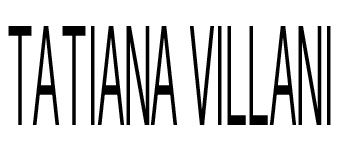(Dis)cover

(please scroll down for english version)
Performance, uno a uno, The Others 2015, a cura di Alessandra Ioalè, proposta da Passaggi Arte Contemporanea.
L’artista Tatiana Villani ha ideato, per la sezione performativa di The Others, un progetto che si basa sul labile confine tra il sé e l’altro, tra l’essere ‘integro’ come individuo e l’essere ‘integrato’ nella società.
Utilizzando i significati metaforici associati all’abito, l’artista propone un modo visivo, esperienziale e agito di stabilire cortocircuiti tra processi di ricerca identitari, di empatia e di svelamento/mascheramento del sé. Processi che mettono in luce tutte le sfaccettature e la complessità che il concetto di integrità solleva ai giorni nostri.
“Non c’è niente di più profondo della pelle”, secondo Paul Valéry, e sulla pelle indossiamo gli abiti, involucri che ci salvaguardano dagli agenti fisici, ma non solo, come si evince dai tantissimi studi sulla storia del costume e dei costumi. Il vestito copre, nasconde, svela. Racconta sempre qualcosa di chi lo indossa. È una sorta di seconda pelle, un veicolo di rappresentazione del sé con cui ci presentiamo agli altri. Nella ‘modernità liquida’ in cui viviamo, dominata dal culto dell’immagine, l’abito sempre più sembra farsi espressione mutevole della sessualità e dell’identità fluida del nostro tempo.
Ma l’abito è anche un potente veicolo di integrazione e omologazione: essere integrati richiede uno sforzo relazionale ed estetico forte e spesso inconsapevole: si vestono i panni di un ruolo, che può essere il genere, la professione, uno stile rappresentativo di un gruppo.
L’abito può rappresentare la scissione psicologica dell’individuo tra come è e come deve apparire secondo i canoni che la società in cui si trova a vivere, lavorare, formare un proprio nucleo familiare. Un adattamento che sembra essere congeniale e facile per sopravvivere e stare bene con gli altri, per mantenere paradossalmente la propria integrità.
Lo ‘Stay Gold’, l’essere d’oro, appare dal tempo e dall’attenzione di un’intima relazione privata, all’interno di uno spazio, un ex carcere (luogo dell’impresentabile, del nascosto, della perdita), durante una fiera d’arte (spazio dell’esposto, dell’esibito, punto luminoso dei riflettori).


(Dis) cover
Performance, one to one, The Others, 2015, curated by Alessandra Ioalè, proposed by Passaggi Arte Contemporanea.
The artist Tatiana Villani has created, for the performative section of The Others, a project that is based on the fragile boundary between the self and the other, between being ‘integral’ as an individual and being ‘ integrated into society.
Using the metaphorical meanings associated with the dress, the artist proposes a visual, experiential and acting way of establishing short circuits between processes of identity research, of empathy and of unveiling / masking of the self. Processes that highlight all the facets and complexity that the concept of integrity raises today.
“There is nothing deeper than leather”, according to Paul Valéry, and we wear clothes on our skin, envelopes that safeguard us from physical agents, but not only, as can be seen from the many studies on the history of costume and costumes. The dress covers, hides, reveals. It always tells something about the wearer. It is a sort of second skin, a vehicle of representation of the self with which we present ourselves to others. In the “liquid modernity” in which we live, dominated by the cult of image, the dress increasingly seems to become a changing expression of sexuality and the fluid identity of our time.
But the dress is also a powerful vehicle of integration and homologation: being integrated requires a strong and often unconscious relational and aesthetic effort: they take on the role of a role, which can be gender, profession, a representative style of a group .
The dress can represent the psychological split of the individual between how it is and how it should appear according to the canons that the society in which it finds itself living, working, forming its own family nucleus. An adaptation that seems to be congenial and easy to survive and be comfortable with others, to keep its integrity paradoxically.
The ‘Stay Gold’, the golden being appear from the time and the attention of an intimate private relationship, within a space, a former prison – place of the unpresentable, the hidden, the loss – during an art fair – space of exhibiton, of manifestetion, spotlight spot.
Feedback book







